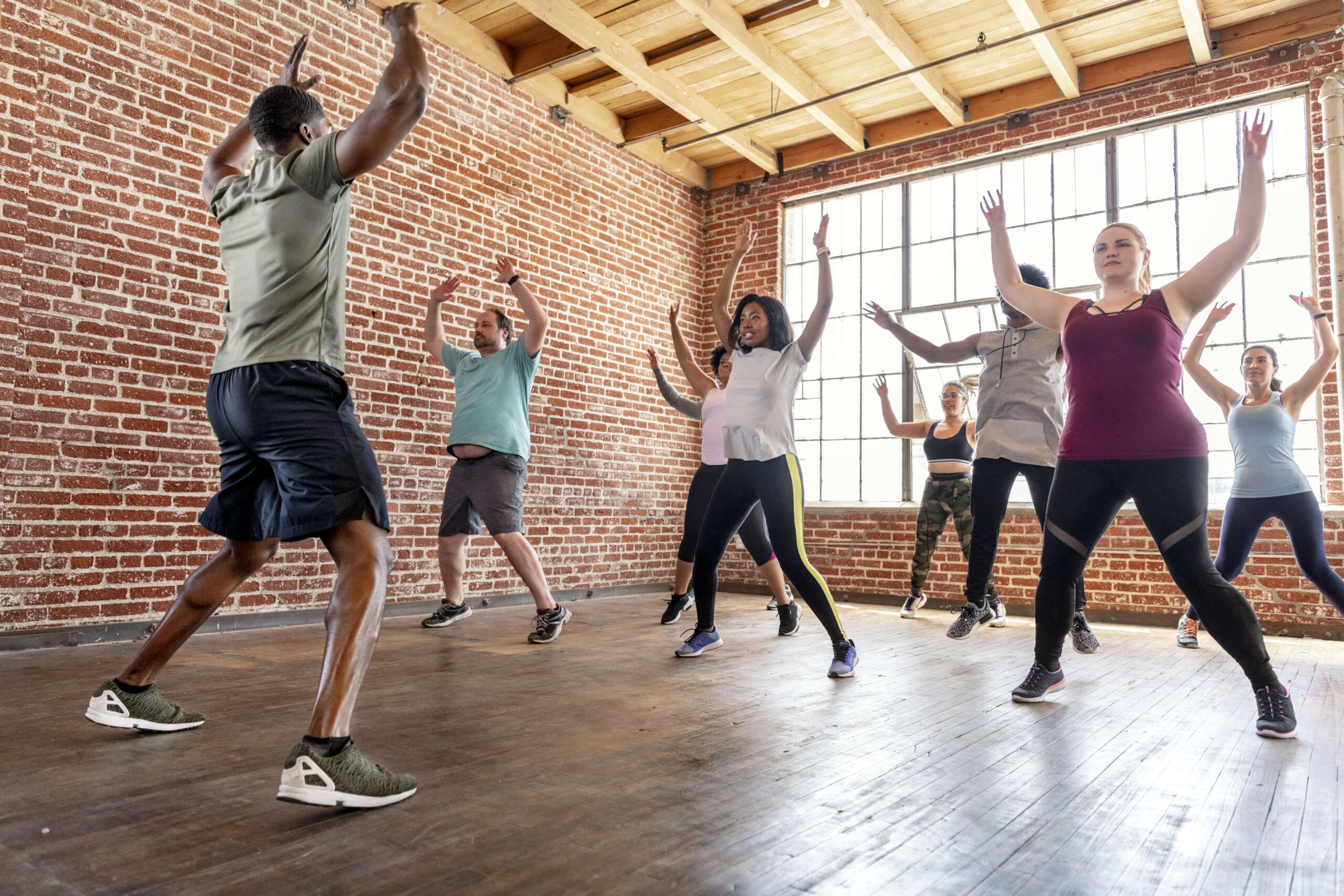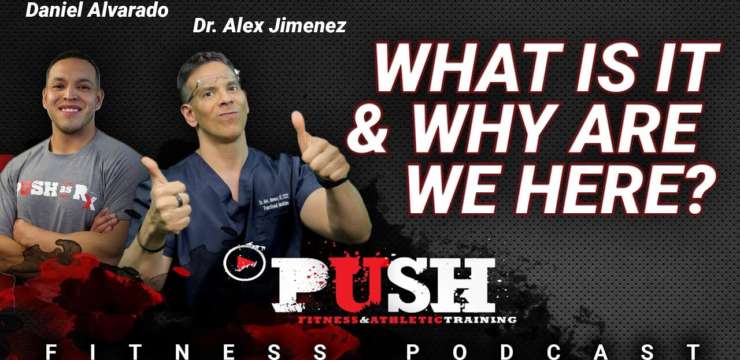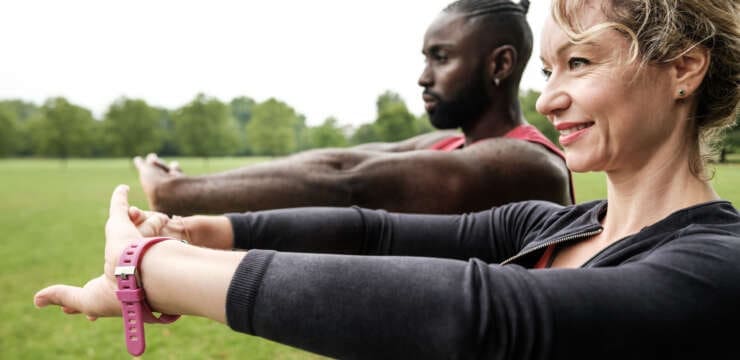
Discover how exercises can complement chiropractic care to alleviate muscle pain and enhance your daily activities.
Table of Contents
Chiropractic Care and Exercise: A Winning Combo for Muscle Pain Relief
Picture this: you’re reaching for your morning coffee, but a sharp twinge in your back reminds you of yesterday’s attempt to “help” move your friend’s couch. Or maybe you’re stiff from sitting at your desk all day, feeling like your shoulders are auditioning for a role in a horror movie about creaky joints. Muscle pain is no laughing matter, but don’t worry—there’s a dynamic duo ready to save the day: chiropractic care paired with exercises like CrossFit and weight training. This combination is like peanut butter and jelly for your musculoskeletal system—each is great alone, but together, they’re unstoppable.
In this comprehensive guide, we’ll explore why blending chiropractic care with CrossFit and weight training is a game-changer for relieving muscle pain. We’ll dive into the environmental factors that contribute to musculoskeletal pain, break down how specific exercises target key muscle groups, and analyze the role of the musculoskeletal system in pain management. We’ll also highlight the expertise of Dr. Alexander Jimenez, DC, APRN, FNP-BC, a leading practitioner in El Paso, Texas, who combines chiropractic care with functional medicine to address pain at its root. Plus, we’ll emphasize his critical role in personal injury cases, where his dual-scope approach bridges medical treatment and legal documentation. With a sprinkle of humor to keep things light, this 5,000+ word guide will arm you with the knowledge to tackle muscle pain and move better. Let’s get started!
Understanding Musculoskeletal Pain: Why Your Body’s Complaining
Musculoskeletal pain is like that annoying neighbor who keeps knocking on your door—it’s persistent, disruptive, and you just want it to go away. It affects your muscles, bones, joints, ligaments, and tendons, making everything from tying your shoes to lifting groceries feel like a Herculean task. To conquer this foe, we first need to understand what’s causing it and how environmental factors play a role.
What Is Musculoskeletal Pain?
Musculoskeletal pain is discomfort in the body’s movement system, ranging from a dull ache to a stabbing sensation. It can be acute (short-term, like post-workout soreness) or chronic (long-term, like arthritis or lower back pain). Common conditions include back pain, neck stiffness, joint inflammation, and discomfort related to injury. Research shows that musculoskeletal disorders are a leading cause of disability, often requiring a mix of physical and psychological interventions (Silva Guerrero et al., 2018).
Environmental Factors Fueling the Fire
Your environment can sneakily turn up the volume on muscle pain. Here’s how:
- Poor Posture and Ergonomics: Slouching at your desk, as if you’re practicing for the Grumpy Cat audition, strains your neck, shoulders, and back. Improper chair height or monitor placement can make things worse, leading to chronic tension (El Paso Health Coach Clinic, n.d.).
- Sedentary Lifestyle: If your daily workout consists of marathon sessions of Netflix episodes, your muscles are probably begging for action. Inactivity weakens muscles and stiffens joints, thereby increasing the risk of pain (Tremblay et al., 2013).
- Repetitive Motions: Jobs or hobbies involving repetitive tasks—such as typing faster than a caffeinated squirrel or lifting boxes all day—can cause overuse injuries, including tendonitis or carpal tunnel syndrome.
- Environmental Toxins: Exposure to pollutants or chemicals can trigger inflammation, amplifying pain in conditions like arthritis. Functional medicine, as practiced by Dr. Jimenez, digs into these hidden culprits (El Paso Health Coach Clinic, n.d.).
- Stress: Chronic stress tightens muscles like a guitar string, making pain feel more intense. It’s like your body’s saying, “I’m stressed, so let’s make your shoulders feel like concrete!” (Silva Guerrero et al., 2018).
- Trauma and Injuries: Car accidents, falls, or that time you thought you could “jump like a ninja” can cause immediate or delayed pain. In El Paso, where traffic accidents are common, these injuries are a significant concern (Jimenez, 2024).
Why It Matters
Think of these factors as puzzle pieces. Solving the puzzle means identifying which pieces are causing your pain and addressing them. By addressing environmental triggers, you can alleviate discomfort and prevent it from becoming a chronic, unwelcome guest.
References
- Silva Guerrero, A. V., Maujean, A., Campbell, L., & Sterling, M. (2018). A systematic review and meta-analysis of the effectiveness of psychological interventions delivered by physiotherapists on pain, disability and psychological outcomes in musculoskeletal pain conditions. The Clinical Journal of Pain, 34(9), 838-857.
- Tremblay, M. S., LeBlanc, A. G., Kho, M. E., Saunders, T. J., Larouche, R., Colley, R. C., … & Gorber, S. C. (2013). Systematic review of sedentary behaviour and health indicators in school-aged children and youth. International Journal of Behavioral Nutrition and Physical Activity, 10(1), 98.
- El Paso Health Coach Clinic. (n.d.). Functional medicine and wellness. Retrieved from healthcoach.clinic/
- Jimenez, A. (2024). Injury medical & chiropractic clinic. Retrieved from elpasobackclinic.com/
The Musculoskeletal System: Your Body’s Framework
Your musculoskeletal system is like the scaffolding of a building—it holds you up, lets you move, and takes a beating when things go wrong. When it’s out of alignment, it’s like trying to build a house on a wobbly foundation. Let’s break down its components and how dysfunction leads to pain.
Components of the Musculoskeletal System
- Muscles: The powerhouses that drive movement. Overuse, weakness, or injury can cause spasms or soreness.
- Bones: The sturdy framework. Fractures or misalignments (e.g., from poor posture) can trigger pain.
- Joints: The hinges (knees, elbows, hips) where bones meet. Inflammation or injury makes them creaky.
- Ligaments and Tendons: Ligaments connect bones to bones, while tendons link muscles to bones. Strains or tears are painful culprits.
- Nerves: The communication network. When pinched or irritated, they send pain signals faster than you can say “ouch.”
How Dysfunction Causes Pain
When one part of this system misbehaves, it’s like a domino effect. A misaligned spine can pinch nerves, causing radiating pain (like sciatica). Weak muscles from too much couch time can strain joints, mimicking the symptoms of arthritis. Injuries, particularly those resulting from accidents, can disrupt the entire system, leading to acute or chronic pain (Jimenez, 2024). For example, a car accident might cause whiplash, which strains neck muscles and misaligns cervical vertebrae.
Overlapping Risk Profiles
Musculoskeletal pain often stems from multiple risk factors working together, such as:
- Inactivity: Weakens muscles and stiffens joints (Tremblay et al., 2013).
- Poor Biomechanics: Misaligned joints or improper movement patterns stress tissues.
- Inflammation: Fueled by poor diet, stress, or toxins, it worsens pain (El Paso Health Coach Clinic, n.d.).
- Trauma: Personal injuries, common in El Paso’s busy traffic, can cause long-term issues if untreated.
References
- Tremblay, M. S., et al. (2013). Systematic review of sedentary behaviour and health indicators in school-aged children and youth. International Journal of Behavioral Nutrition and Physical Activity, 10(1), 98.
- El Paso Health Coach Clinic. (n.d.). Functional medicine and wellness. Retrieved from healthcoach.clinic/
- Jimenez, A. (2024). Injury medical & chiropractic clinic. Retrieved from elpasobackclinic.com/
Chiropractic Care: Aligning Your Body for Relief
Chiropractic care is like hitting the reset button on your body’s alignment. It focuses on the spine and nervous system to restore balance, reduce pain, and improve function. Dr. Alexander Jimenez, a chiropractor and nurse practitioner in El Paso, takes this a step further by integrating functional medicine to address pain’s root causes.
How Chiropractic Care Works
Chiropractic adjustments involve manual manipulation to correct spinal misalignments (subluxations) that can compress nerves or strain muscles. Benefits include:
- Reduced Nerve Compression: Relieves conditions such as sciatica or neck pain.
- Improved Joint Mobility: Increases range of motion and reduces stiffness.
- Decreased Muscle Tension: Relieves spasms and promotes relaxation.
A 2021 study found that combining chiropractic care with physical therapy significantly reduces pain and improves function in musculoskeletal disorders (Hon et al., 2021).
Dr. Jimenez’s Unique Approach
Dr. Jimenez’s practice at Injury Medical & Chiropractic Clinic stands out due to his dual licensure and holistic approach. He uses:
- Advanced Imaging: X-rays and MRIs to pinpoint misalignments, disc issues, or soft tissue injuries (Jimenez, 2024).
- Diagnostic Evaluations: Neurological and musculoskeletal tests to detect nerve compression or radiculopathy.
- Dual-Scope Procedures: Blending chiropractic adjustments with medical evaluations for comprehensive care.
- Functional Medicine: Addressing lifestyle factors like nutrition and stress that contribute to pain (El Paso Health Coach Clinic, n.d.).
This approach is especially valuable for personal injury cases, where precise documentation supports legal and insurance claims. Dr. Jimenez’s expertise ensures accurate diagnosis and treatment while providing legally admissible reports (Jimenez, 2017).
Personal Injury Expertise in El Paso
El Paso’s busy roads make car accidents a common cause of musculoskeletal injuries. Dr. Jimenez excels in treating victims, using advanced diagnostics to identify issues like whiplash or soft tissue damage. His ability to correlate injuries with objective findings (e.g., imaging, functional tests) ensures fair compensation and effective recovery (Jimenez, 2024).
References
- Hon, S., Ritter, R., & Allen, D. D. (2021). Cost-effectiveness and outcomes of direct access to physical therapy for musculoskeletal disorders compared to physician-first access in the United States: Systematic review and meta-analysis. Physical Therapy, 101(1), pzaa201.
- El Paso Health Coach Clinic. (n.d.). Functional medicine and wellness. Retrieved from healthcoach.clinic/
- Jimenez, A. (2024). Injury medical & chiropractic clinic. Retrieved from elpasobackclinic.com/
- Jimenez, A. (2017). El Paso, TX chiropractor Dr. Alex Jimenez DC | Personal injury specialist. Retrieved from dralexjimenez.com/
The Science of Motion- Video
CrossFit and Weight Training: Powering Up Your Muscles
If chiropractic care is the tune-up, CrossFit and weight training are the fuel that keeps your musculoskeletal system humming. These exercises strengthen muscles, stabilize joints, and boost fitness, making them perfect partners for chiropractic care.
CrossFit: The Fitness Fiesta
CrossFit is like a workout buffet—there’s something for every muscle group, and it’s served with a side of high energy. It combines weightlifting, gymnastics, and cardio in high-intensity, functional movements. Research suggests CrossFit improves strength, endurance, and mental health through its community-driven approach (Rios et al., 2024; Muscle & Strength, n.d.).
Key CrossFit Exercises and Their Benefits:
- Deadlifts:
- Muscles Targeted: Glutes, hamstrings, lower back, core.
- Benefits: Strengthens the posterior chain, improving posture and reducing lower back pain (Jeong et al., 2015).
- Squats:
- Muscles Targeted: Quads, glutes, core.
- Benefits: Enhances leg strength and knee stability, helpful for osteoarthritis (Anwer et al., 2019).
- Pull-Ups:
- Muscles Targeted: Lats, biceps, shoulders, core.
- Benefits: Builds upper body strength, reducing the risk of shoulder injury.
- Kettlebell Swings:
- Muscles Targeted: Glutes, hamstrings, core.
- Benefits: Boosts hip power and core stability, helping to prevent pain.
- Box Jumps:
- Muscles Targeted: Quads, glutes, calves.
- Benefits: Improves explosive power and mobility.
CrossFit’s intensity can reduce fatigue and boost energy, as shown in a meta-analysis (Loy et al., 2013). However, proper form is crucial to avoid injury, especially given CrossFit’s high injury rate in untrained individuals (Rodríguez et al., 2022).
Weight Training: Sculpting Strength
Weight training is like carving a statue—methodical, precise, and focused on building strength. It targets specific muscles with controlled movements, complementing CrossFit’s dynamic approach.
Key Weight Training Exercises and Their Benefits:
- Bench Press:
- Muscles Targeted: Chest, triceps, and shoulders.
- Benefits: Strengthens upper body pushing muscles, improving shoulder function.
- Bent-Over Rows:
- Muscles Targeted: Upper back, lats, biceps.
- Benefits: Enhances posture, reducing neck and shoulder pain.
- Leg Press:
- Muscles Targeted: Quads, glutes, hamstrings.
- Benefits: Builds lower body strength, supporting knee health.
- Shoulder Press:
- Muscles Targeted: Deltoids, triceps, and core.
- Benefits: Improves shoulder stability, reducing rotator cuff issues.
- Plank:
- Muscles Targeted: Core, shoulders, and back.
- Benefits: Strengthens core, reducing lower back pain (Jeong et al., 2015).
Weight training’s progressive overload builds muscle strength over time, reducing the risk of pain and injury (Heidel et al., 2022).
CrossFit vs. Weight Training: The Great Debate
CrossFit is ideal for those who thrive on variety and community, while weight training suits those who prefer a structured approach and focus. Both reduce pain when paired with chiropractic care, as adjustments ensure proper alignment for effective exercise (Muscle & Strength, n.d.). CrossFit’s injury risk (35.3% prevalence) is comparable to weight training, but proper coaching is key (Rodríguez et al., 2022).
References
- Rios, M., Becker, K. M., Monteiro, A. S., Fonseca, P., Pyne, D. B., Reis, V. M., … & Fernandes, R. (2024). The effects of CrossFit® practice on physical fitness and overall quality of life. International Journal of Environmental Research and Public Health, 22(1), 19.
- Muscle & Strength. (n.d.). CrossFit vs. Weight Training: Which Is Better for Your Goals? Retrieved from www.muscleandstrength.com/workouts/crossfit-vs-weight-training
- Jeong, U. C., Sim, J. H., Kim, C. Y., & Hwang-Bo, G. (2015). The Effects of Isometric Exercise Types on Pain and Muscle Activity in Patients with Low Back Pain. Journal of Exercise Rehabilitation, 11(4), 211-214.
- Anwer, S., Quddus, N., Miraj, M., & Equebal, A. (2019). Effect of 6-week retro or forward walking program on pain, functional disability, quadriceps muscle strength, and performance in individuals with knee osteoarthritis: A randomized controlled trial (retro-walking trial). BMC Musculoskeletal Disorders, 20(1), 159.
- Loy, B. D., O’Connor, P. J., & Dishman, R. K. (2013). The effect of a single bout of exercise on energy and fatigue states: A systematic review and meta-analysis. Fatigue: Biomedicine, Health & Behavior, 1(4), 223-242.
- Rodríguez, M. Á., García-Calleja, P., Terrados, N., Crespo, I., Del Valle, M., & Olmedillas, H. (2022). Injury in CrossFit: A Systematic Review of Epidemiology and Risk Factors. The Physician and Sportsmedicine, 50(1), 3-10.
- Heidel, K. A., Novak, Z. J., & Dankel, S. J. (2022). Machines and free weight exercises: A systematic review and meta-analysis comparing changes in muscle size, strength, and power. Journal of Sports Medicine and Physical Fitness, 62(8), 1061-1070.
The Synergy: Chiropractic Care Meets Exercise
Combining chiropractic care with CrossFit and weight training is like assembling the Avengers of pain relief—each brings unique strengths to the fight. Here’s how they work together:
- Alignment and Mobility: Chiropractic adjustments correct misalignments, ensuring exercises like deadlifts and squats are performed with proper form, thereby reducing the risk of injury.
- Strength and Stability: CrossFit and weight training strengthen muscles and stabilize joints, maintaining chiropractic adjustments and preventing subluxations.
- Pain Reduction: Adjustments relieve nerve pressure, while exercise improves blood flow and reduces inflammation, tackling both acute and chronic pain (Hon et al., 2021).
- Functional Fitness: CrossFit’s functional movements mimic daily tasks, while chiropractic care ensures your body can handle them pain-free.
- Holistic Health: Dr. Jimenez’s functional medicine approach integrates nutrition and stress management, enhancing the benefits of exercise and chiropractic care (El Paso Health Coach Clinic, n.d.).
Clinical Insights from Dr. Jimenez
Dr. Jimenez shares practical tips to maximize this synergy:
- Posture Checks: Set a timer to check your posture hourly, especially at work.
- Micro-Movements: Take 5-minute walks or stretches every 30 minutes to combat inactivity.
- Nutrition: Eat anti-inflammatory foods, such as salmon and spinach, to help reduce pain triggers.
- Stress Management: Practice deep breathing or meditation to ease muscle tension (Jimenez, 2024).
These small changes, combined with regular chiropractic visits and exercise, create a robust defense against pain.
References
- Hon, S., Ritter, R., & Allen, D. D. (2021). Cost-effectiveness and outcomes of direct access to physical therapy for musculoskeletal disorders compared to physician-first access in the United States: Systematic review and meta-analysis. Physical Therapy, 101(1), pzaa201.
- El Paso Health Coach Clinic. (n.d.). Functional medicine and wellness. Retrieved from healthcoach.clinic/
- Jimenez, A. (2024). Injury medical & chiropractic clinic. Retrieved from elpasobackclinic.com/
Non-Surgical Treatments: The Supporting Cast
Chiropractic care and exercise are stars, but non-surgical treatments add depth to your pain relief strategy. Dr. Jimenez incorporates:
- Physical Therapy: Targeted exercises and modalities, such as ultrasound, reduce pain and improve function (Hon et al., 2021).
- Acupuncture Stimulates Specific points to relieve pain, particularly neuropathic pain.
- Platelet-Rich Plasma (PRP): Enhances tissue repair and reduces inflammation in conditions like lumbar pain (Sanapati et al., 2019).
- Nutritional Counseling: Personalized diets reduce inflammation and support recovery (El Paso Health Coach Clinic, n.d.).
- Backward Walking: Improves gait and reduces pain in knee osteoarthritis (Anwer et al., 2019).
These treatments complement chiropractic care and exercise, creating a comprehensive approach to pain management.
References
- Hon, S., Ritter, R., & Allen, D. D. (2021). Cost-effectiveness and outcomes of direct access to physical therapy for musculoskeletal disorders compared to physician-first access in the United States: Systematic review and meta-analysis. Physical Therapy, 101(1), pzaa201.
- Sanapati, J., et al. (2019). Platelet-rich plasma for lumbar pain: A meta-analysis. Pain Physician, 22(4), 345-356.
- Anwer, S., et al. (2019). Effect of 6-week retro or forward walking program on pain, functional disability, quadriceps muscle strength, and performance in individuals with knee osteoarthritis: A randomized controlled trial (retro-walking trial). BMC Musculoskeletal Disorders, 20(1), 159.
- El Paso Health Coach Clinic. (n.d.). Functional medicine and wellness. Retrieved from healthcoach.clinic/
Dr. Jimenez: El Paso’s Personal Injury Champion
In El Paso, where car accidents are a leading cause of musculoskeletal injuries, Dr. Alexander Jimenez is a trusted ally. With over 33 years of experience, his dual licensure allows him to:
- Diagnose Precisely: Utilizing X-rays, MRIs, and tests such as the Timed Up and Go (TUG) to assess mobility and associated risks (Schoene et al., 2017).
- Document for Legal Needs: Providing detailed reports to support insurance claims and legal proceedings.
- Treat Holistically: Combining chiropractic adjustments, physical therapy, and functional medicine for full recovery.
His expertise ensures personal injury victims receive comprehensive care while navigating legal challenges (Jimenez, 2017).
References
- Schoene, M. L., et al. (2017). Timed Up and Go (TUG) test: Normative reference values for ages 20 to 59 years and relationships with physical and mental health risk factors. Journal of Geriatric Physical Therapy, 40(2), 88-94.
- Jimenez, A. (2017). El Paso, TX chiropractor Dr. Alex Jimenez DC | Personal injury specialist. Retrieved from dralexjimenez.com/
Practical Tips to Kick Pain to the Curb
Ready to take charge? Here’s how to integrate chiropractic care, CrossFit, and weight training into your life, with tips from Dr. Jimenez:
- Get a Chiropractic Checkup: Start with an evaluation to ensure proper alignment before exercising.
- Ease into CrossFit: Start with scaled workouts under the guidance of a certified coach to minimize the risk of injury.
- Weight Train Smart: Focus on compound lifts 2-3 times weekly, increasing weights gradually.
- Schedule Adjustments: Weekly or biweekly chiropractic visits maintain alignment.
- Add Therapies: Try acupuncture or physical therapy for chronic pain.
- Lifestyle Tweaks: Eat anti-inflammatory foods, move every 30 minutes, and manage stress.
- Track Progress: Utilize tests such as the 6-Minute Walk Test to monitor mobility (Harada et al., 2017).
References
- Harada, N. D., et al. (2017). Clinical Associations and Prognostic Implications of the 6-Minute Walk Test in Rheumatoid Arthritis. Arthritis Care & Research, 69(6), 837-843.
- Jimenez, A. (2024). Injury medical & chiropractic clinic. Retrieved from elpasobackclinic.com/
Conclusion
Musculoskeletal pain doesn’t have to rule your life. By combining chiropractic care with CrossFit and weight training, you can address the root causes of pain, strengthen your body, and enhance your overall well-being. Dr. Alexander Jimenez, a leading practitioner in El Paso, Texas, offers a unique blend of chiropractic expertise and functional medicine, making him a go-to for personal injury victims and those seeking holistic pain relief. His advanced diagnostics and dual-scope approach ensure comprehensive care and legal support.
Disclaimer: This blog post is for informational purposes only and is not a substitute for professional medical advice. Consult a qualified healthcare provider, such as Dr. Jimenez, before starting any treatment or exercise program. Contact Injury Medical & Chiropractic Clinic at (915) 850-0900 or visit elpasobackclinic.com/ for personalized care.
References
- El Paso Health Coach Clinic. (n.d.). Functional medicine and wellness. Retrieved from healthcoach.clinic/
- Jimenez, A. (2024). Injury medical & chiropractic clinic. Retrieved from elpasobackclinic.com/
- Jimenez, A. (2017). El Paso, TX chiropractor Dr. Alex Jimenez DC | Personal injury specialist. Retrieved from dralexjimenez.com/
- Hon, S., Ritter, R., & Allen, D. D. (2021). Cost-effectiveness and outcomes of direct access to physical therapy for musculoskeletal disorders compared to physician-first access in the United States: Systematic review and meta-analysis. Physical Therapy, 101(1), pzaa201.
- Silva Guerrero, A. V., et al. (2018). A systematic review and meta-analysis of the effectiveness of psychological interventions delivered by physiotherapists on pain, disability, and psychological outcomes in musculoskeletal pain conditions. The Clinical Journal of Pain, 34(9), 838-857.
- Jeong, U. C., et al. (2015). The Effects of Isometric Exercise Types on Pain and Muscle Activity in Patients with Low Back Pain. Journal of Exercise Rehabilitation, 11(4), 211-214.
- Anwer, S., et al. (2019). Effect of 6-week retro or forward walking program on pain, functional disability, quadriceps muscle strength, and performance in individuals with knee osteoarthritis: A randomized controlled trial (retro-walking trial). BMC Musculoskeletal Disorders, 20(1), 159.
- Loy, B. D., et al. (2013). The effect of a single bout of exercise on energy and fatigue states: A systematic review and meta-analysis. Fatigue: Biomedicine, Health & Behavior, 1(4), 223-242.
- Harada, N. D., et al. (2017). Clinical Associations and Prognostic Implications of the 6-Minute Walk Test in Rheumatoid Arthritis. Arthritis Care & Research, 69(6), 837-843.
- Schoene, M. L., et al. (2017). Timed Up and Go (TUG) test: Normative reference values for ages 20 to 59 years and relationships with physical and mental health risk factors. Journal of Geriatric Physical Therapy, 40(2), 88-94.
- Sanapati, J., et al. (2019). Platelet-rich plasma for lumbar pain: A meta-analysis. Pain Physician, 22(4), 345-356.
- Muscle & Strength. (n.d.). CrossFit vs. Weight Training: Which Is Better for Your Goals? Retrieved from www.muscleandstrength.com/workouts/crossfit-vs-weight-training
- Jimenez, A. (n.d.). Dr. Alexander Jimenez, DC, APRN, FNP-BC, IFMCP, CFMP, ATN. Retrieved from www.linkedin.com/in/dralexjimenez/
- Rios, M., et al. (2024). The effects of CrossFit® practice on physical fitness and overall quality of life. International Journal of Environmental Research and Public Health, 22(1), 19.
- Rodríguez, M. Á., et al. (2022). Injury in CrossFit: A Systematic Review of Epidemiology and Risk Factors. The Physician and Sportsmedicine, 50(1), 3-10.
- Heidel, K. A., et al. (2022). Machines and free weight exercises: A systematic review and meta-analysis comparing changes in muscle size, strength, and power. Journal of Sports Medicine and Physical Fitness, 62(8), 1061-1070.
Disclaimers
Professional Scope of Practice *
The information herein on "Exercise Techniques to Try With Chiropractic Care for Muscle Pain" is not intended to replace a one-on-one relationship with a qualified health care professional or licensed physician and is not medical advice. We encourage you to make healthcare decisions based on your research and partnership with a qualified healthcare professional.
Blog Information & Scope Discussions
Welcome to El Paso's wellness blog, where Dr. Alex Jimenez, DC, FNP-C, a board-certified Family Practice Nurse Practitioner (FNP-C) and Chiropractor (DC), presents insights on how our team is dedicated to holistic healing and personalized care. Our practice aligns with evidence-based treatment protocols inspired by integrative medicine principles, similar to those found on dralexjimenez.com, focusing on restoring health naturally for patients of all ages.
Our areas of chiropractic practice include Wellness & Nutrition, Chronic Pain, Personal Injury, Auto Accident Care, Work Injuries, Back Injury, Low Back Pain, Neck Pain, Migraine Headaches, Sports Injuries, Severe Sciatica, Scoliosis, Complex Herniated Discs, Fibromyalgia, Chronic Pain, Complex Injuries, Stress Management, Functional Medicine Treatments, and in-scope care protocols.
Our information scope is limited to chiropractic, musculoskeletal, physical medicine, wellness, contributing etiological viscerosomatic disturbances within clinical presentations, associated somato-visceral reflex clinical dynamics, subluxation complexes, sensitive health issues, and functional medicine articles, topics, and discussions.
We provide and present clinical collaboration with specialists from various disciplines. Each specialist is governed by their professional scope of practice and their jurisdiction of licensure. We use functional health & wellness protocols to treat and support care for the injuries or disorders of the musculoskeletal system.
Our videos, posts, topics, subjects, and insights cover clinical matters, issues, and topics that relate to and directly or indirectly support our clinical scope of practice.*
Our office has reasonably attempted to provide supportive citations and has identified the relevant research studies or studies supporting our posts. We provide copies of supporting research studies available to regulatory boards and the public upon request.
We understand that we cover matters that require an additional explanation of how they may assist in a particular care plan or treatment protocol; therefore, to discuss the subject matter above further, please feel free to ask Dr. Alex Jimenez, DC, APRN, FNP-BC, or contact us at 915-850-0900.
We are here to help you and your family.
Blessings
Dr. Alex Jimenez DC, MSACP, APRN, FNP-BC*, CCST, IFMCP, CFMP, ATN
email: coach@elpasofunctionalmedicine.com
Licensed as a Doctor of Chiropractic (DC) in Texas & New Mexico*
Texas DC License # TX5807
New Mexico DC License # NM-DC2182
Licensed as a Registered Nurse (RN*) in Texas & Multistate
Texas RN License # 1191402
ANCC FNP-BC: Board Certified Nurse Practitioner*
Compact Status: Multi-State License: Authorized to Practice in 40 States*
Graduate with Honors: ICHS: MSN-FNP (Family Nurse Practitioner Program)
Degree Granted. Master's in Family Practice MSN Diploma (Cum Laude)
Dr. Alex Jimenez, DC, APRN, FNP-BC*, CFMP, IFMCP, ATN, CCST
My Digital Business Card






